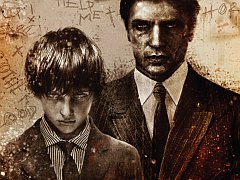You can trust VideoGamer. Our team of gaming experts spend hours testing and reviewing the latest games, to ensure you're reading the most comprehensive guide possible. Rest assured, all imagery and advice is unique and original. Check out how we test and review games here
“The fear of blood tends to create fear for the flesh.” That was the rather creepy intro message that greeted players of the original Silent Hill, way back in 1999. While the meaning of this statement is debatable, I always took it to mean that the sight of blood will make a person fear for their own safety. Silent Hill was just a game, but that didn’t stop its freaky imagery from making me feel vulnerable and threatened.
This idea is as true today as it has ever been. Almost a decade after the first game scared me half to death, I find myself playing Silent Hill Homecoming – the sixth entry in the survival horror series. Ten years have passed, but not much has changed. After the strange departure that was 2004’s The Room, we’re once again sailing through familiar waters: there’s a troubled hero, an atmosphere that feels like a horrible dream, and the shape-shifting locale of Silent Hill itself. In its “normal” state the place resembles an abandoned rural town, shrouded in thick fog. This is pretty eerie in its own right, but every so often a siren will sound and the world transforms into a nightmarish doppelganger – a rusted metal hell, strewn with dismembered corpses.
All of this will sound very familiar to veterans of the series, despite the fact that development of this game was handled by US studio Double Helix, rather than Konami’s own Team Silent. This is in fact the second game to be farmed out to an external developer, following 2007’s PSP title Origins. It’s not clear what this says about Konami’s attitude to its long-standing franchise, but it’s certainly evident that the Americans have done an excellent job in nailing the key ingredients of the Silent Hill experience. Innovation, on the other hand, is largely lacking – and it’s this dearth that ultimately holds the game back from greater success.
Homecoming places you in the role of Alex Shepherd, a young war veteran who returns from battle to find things are seriously wrong in his hometown: his brother and father have gone missing, his mother appears to be going through some form of mental breakdown, and hideous monsters are roaming the streets. Before you even begin to deal with this situation, you’ll have to work your way through an introductory dream sequence set inside a demonic hospital. Here you’ll be introduced to the game’s close combat system, one of the few areas in which the game makes a departure from the previous entries in the series: While most Silent Hill heroes are Everyday Joe characters who lack combat experience, Alex is a fully-trained soldier. After locking on to a target via one of the shoulder buttons, you’ll be able to lash out with light and heavy attacks that can be easily stringed into powerful combos. Strong attacks will sometimes stun the monsters you face, allowing Alex to follow-up with a brutal finishing move.
Naturally the monsters you face won’t go down without a fight, and to survive for long in Homecoming you’ll have to use Alex’s dodging abilities. Hit B (or circle on a PS3 pad) in conjunction with the left stick, and our man will dive and roll in the direction of your choice. Hit the button on its own, and he’ll attempt to avoid an incoming attack – providing the perfect opportunity for a counter. Timing is everything with these moves, and initially you may find yourself taking a thorough beating from the world’s grisly denizens. You will also have to deal with the occasional puzzle – mostly in the form of simple fetch quests – but fighting plays a far greater role in proceedings than in previous Silent Hills. In short, countering is something you’ll have to master.
With practise you will learn the best ways to deal with specific monsters, but battles never feel like an easy activity. While you do get access to a few guns as the game progresses, you’re strictly limited in the amount of ammo you can carry. As a result of this setup, battles tend to be quite stressful affairs – particularly since you can only save your progress at dedicated icons dotted around each area. There’s no doubt that the scarcity of these points will frustrate some users, but the game certainly gains an added layer of tension as a result. That’s all well and good, but there’s something of a difficulty spike in the game’s middle chapters, during which time you’re forced to fight off large hoards of nasties with relatively little in the way of supplies or relief. While hardly game-ruining, this jump leaves the game feeling rather unbalanced.
The monsters themselves boast some creatively warped designs, although they seem to lack the thematic links that made previous foes so strong. To clarify: the creatures in past Silent Hill titles were supposed to be reflections of their game’s themes, whereas here they are just weird for weirdness’ sake. Veterans of the series may also be irritated by the appearance of Pyramid Head and the mutant nurses, both of which seem to have been included for the sake of fan-service. On a more positive note, your enemies take on damage in real time – the bloody wounds that you carve into them make them more horrific as a fight draws on. I also have to give credit to Double Helix for some of the nastiest bosses that I’ve ever encountered in a survival horror title: they’re bizarre, hard to kill, and deeply unpleasant to look at.
Fear is a subjective thing, but personally I found this game to be a thoroughly unnerving experience. There’s a pervasive sense of sadness that underpins the quieter moments, something that only grows as the tale of Alex’s family unravels. It would be cruel to reveal many details of Homecoming’s plot, but suffice to say the full story has a fair degree of decent twists and turns. The first half of the game retains the series emphasis on mood and suspense, but in later chapters there’s a surprising rise in the level of violence, too. Two scenes in particular stand out as something you might expect from a film like Saw or Hostel, and the sheer nastiness of these moments is actually quite shocking, for better or worse.
Such gruesomeness aside, it’s the more subtle details that allow Homecoming to get under your skin. The dilapidated environments are a part of this, although some of the locations feel a bit like Silent Hill 101. The Shepherd family home makes for quite an unusual environment, but other locations, like the hotel and the doctor’s clinic, feel like places we’ve been too many times before. The game’s real strength is its audio, both in terms of its excellent score (provided by producer Akira Yamaoka) and the watertight voice acting – still something of a rarity in the genre. Homecoming may not be the strongest of the Silent Hills, but Alex Shepherd is easily the most human of its protagonists. He’s a likeable guy, and this in turn makes his search for his missing brother more affecting.
Despite these impressive production values, Homecoming ultimately fails to achieve greatness. Considering it’s a first effort, Double Helix has done a pretty grand job in replicating the past work of Konami’s own coders, but this doesn’t negate the fact that it’s essentially just more of the same. For newcomers, this game offers a solid entry point to one of the strongest series in the genre – provided you have a strong nerve and the tolerance for an uneven difficulty curve. Experienced Hillers will also find much to enjoy here, but there’s no doubt that this series is in need of fresh direction.
Silent Hill: Homecoming
- Platform(s): PC, PlayStation 3, Xbox 360
- Genre(s): Action, Survival Horror

/https://oimg.videogamer.com/images/4ce1/silent_hill_v_74.jpg)
/https://oimg.videogamer.com/images/1b52/silent_hill_v_68.jpg)






